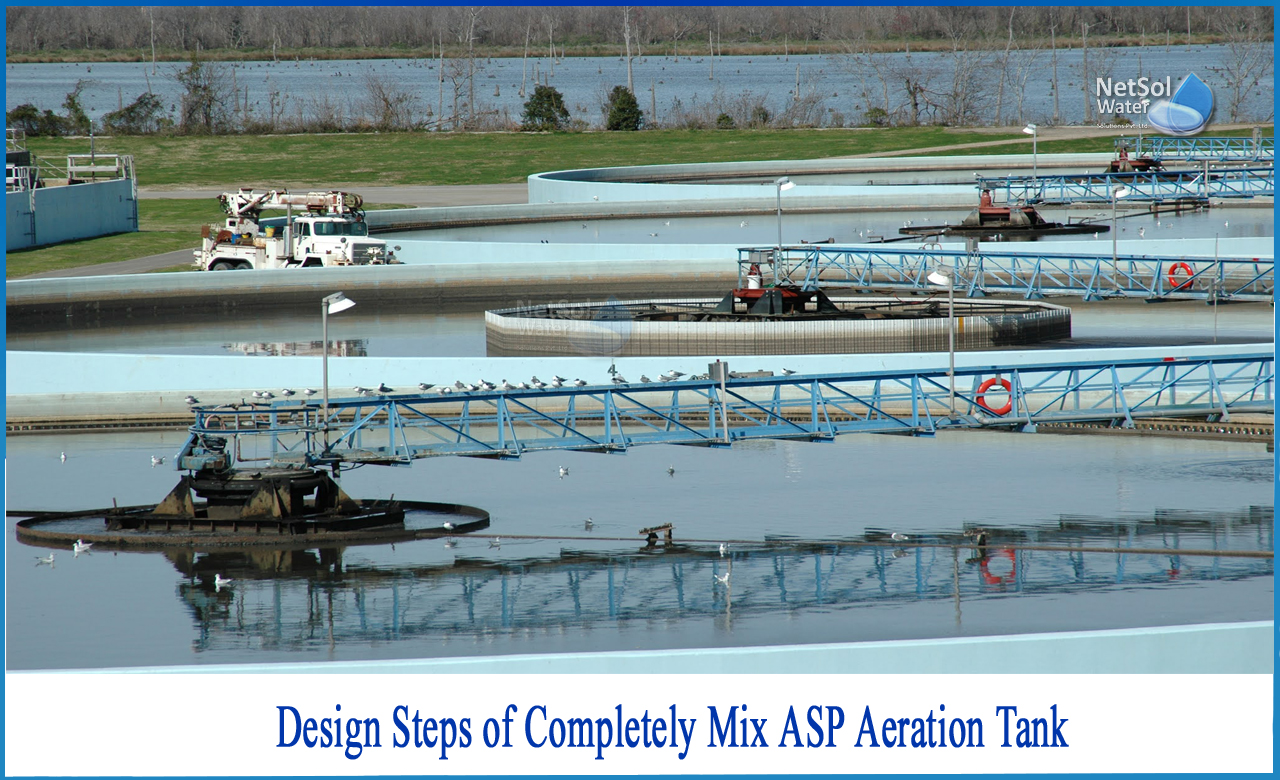What is Activated Sludge Process (ASP)?
Developed in England in 1914, the Activated Sludge Process (ASP) is the most commonly used technology for biological wastewater treatment under aerobic conditions. It is a suspended growth process in which the organisms are suspended in the wastewater. The activated sludge process consists of an aeration tank were organic matter is stabilized which relies on the cultivation of a population of millions of bacteria and a secondary sedimentation tank where the biological cell mass suspended in the wastewater of aeration tank is separated out, the sludge after getting removed from aeration tank is recycled.
The bacteria perform two tasks-
1: Organic substances are oxidized.
2: Converts colloidal and dissolved materials into settleable solids by promoting coagulation and flocculation.
At the bottom of the tank diffusers are provided and at the surface of the water, mechanically aerated, either floating or on-fixed support are provided. The raw wastewater after settlement and a portion of sludge enters from the head of the tank in spiral flow pattern in case of diffused air aerators, or gets uniformly mixed in case of completely mixed reactors. In the settling tank, the effluent gets settled and the sludge is returned.
What is the purpose of ASP?
In a sewage treatment plant, the activated sludge process can be used for one or several of the following purposes:
i) Oxidation of carbonaceous matter: biological matter.
ii) Oxidation nitrogenous matter: mainly ammonium and nitrogen in biological materials.
iii) Removing of phosphate.
iv) Driving off entrapped gases carbon dioxide, ammonia, nitrogen, etc.
v) Generation of a biological floc that is easy to settle.
vi) Generation of a liquor low in dissolved or suspended material.
How to Design Completely Mix ASP aeration tank?
Details of the sizing and operation of the following main elements are included in the design of the activated-sludge process:
1: Capacity and dimensions of an aeration tank (reactor).
2: Oxygen requirements and oxygen transfer system for the aeration system.
3: Tank for final sedimentation.
4: Sludge system that has been activated should be returned. Excess activated sludge removal system, as well as waste sludge treatment and disposal.
5: The hydraulic regime in the aeration tank and final sedimentation tank is virtually the same because the entire process takes place in a liquid medium.
6: MLSS - a mixture of settled sewage and activated sludge with a dissolved oxygen concentration of less than 2 mg/l.
Steps followed in the design of a completely mixed flow aeration tank
In this type of aeration tank, completely mixed flow regime is used.
Complete mixing systems are employed when nitrification and good BOD removal are desired. In warm climates, the option ranges from 5 to 10 days, whereas in temperate climates, the option spans from 5 to 10 days.
Step 1: From one side of the tank, wastewater along with return sludge is uniformly distributed and at the other end of the tank, effluent is collected.
Step 2:The first stage in planning is to select an acceptable value F/M which is decided by the predicted winter temperature of mixed liquor, reactor type, sludge settling characteristics, and nitrification requirements.
For designing of this tank, F/M ratio and volumetric loading of 0.2 to 0.6 kg BOD/kg VSS.day and 0.8 to 2.0kg BOD/m3.d are respectively maintained.
Step 3:The mixed liquor suspended solids (MLSS) value is maintained as 3000 to 6000 mg/l, higher than the conventional aeration tanks and mean residence time is maintained as 5 to 15 days.
Step 4:The next step is to select hydraulic retention time (HRT). For treatment of industrial wastewater having higher concentration of BOD, higher hydraulic retention time may be required. For sewage treatment,(3 to 5 hours) of HRT is required.
Step 5: Maintaining the sludge recirculation ratio in the range of (0.25-1.0).
Advantage of Completely mix type
Due to the following properties, completely mixed ASP is preferred in industries where fluctuations in wastewater is common-
i) Completely mixed ASP has better capability to handle fluctuations in the concentration of organic matter.
ii) The performance is not affected by the presence of toxic compounds in slight concentration in the effluent.
How can Netsol Water assist?
Netsol is a pure-play technology company that offers a variety of wastewater-related solutions around the world, including resource conservation, optimization, recycling, and reuse.
Netsol Water is Greater Noida-based leading water & wastewater treatment plant manufacturer. We are industry's most demanding company based on client review and work quality. We are known as best commercial RO plant manufacturers, industrial RO plant manufacturer, sewage treatment plant manufacturer, Water Softener Plant Manufacturers and effluent treatment plant manufacturers. Apart from this 24x7 customer support is our USP. Call on +91-9650608473, or write us at enquiry@netsolwater.com for any support, inquiry or product-purchase related query.



